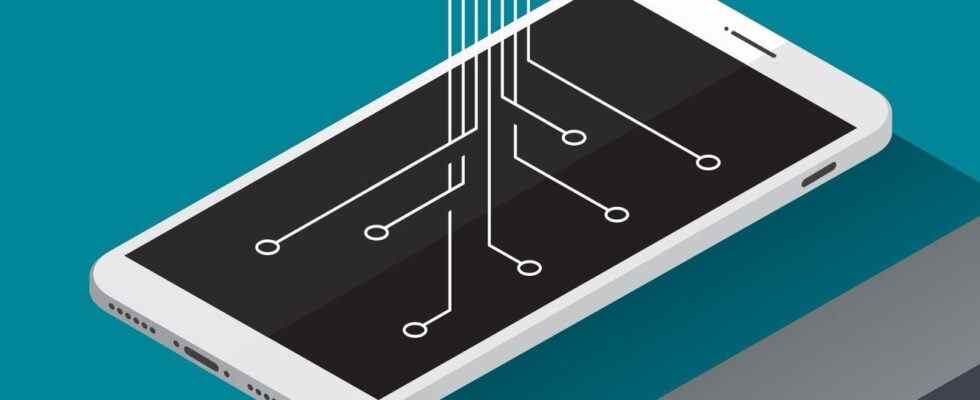The sensor acts as a device that detects and manages changes in the immediate environment and sends this data to the operating system or processor. At this point, they perceive and collect data according to the area in which they are made. Like ambient light, the sensor is made to detect light. Therefore, it is an expert in detecting light. The phone contains many sensors.
Sensors in mobile phones
Mobile phones have three different sensors. They are also divided into groups among themselves. The main sensors are in our smartphones as motion sensors, environmental sensors and location sensors.
motion sensors
These sensors measure axis-based motion detection of forces such as acceleration and rotation with three axes. This category includes accelerometer, gravity and gyroscope sensors.

Environmental sensors
Environmental sensors measure environmental parameters such as air pressure, temperature, light and humidity. In this category, we can give examples of barometers, photometers and thermometers.

position sensors
Position sensors measure the physical location of a device. This category includes orientation sensors and magnetometers. It is also divided into 12 sections among itself. The parts of the position sensor are as follows:
- accelerometer
- ambient light sensor
- Ambient temperature sensor
- air humidity sensor
- barometer sensor
- fingerprint sensor
- gyroscope sensor
- Harmful radiation sensor
- magnetometer
- NFC sensor
- proximity sensor
- pedometer sensor
accelerometer
The accelerometer is analyzing axis-based motion detection. It detects changes in the orientation of smartphones according to the x, y and z axis. Most camera apps today offer specific orientation-based features, such as Portrait Mode or Panorama mode. In addition, if you view photos in portrait mode, they will look different if you keep them in landscape mode. All these features are based on the accelerometer sensor.

ambient light sensor
The ambient light sensor detects the light around us. Thanks to this sensor, the automatic brightness feature of our screen works. It detects the light around you and sends this data back to the operating system. At this point, the operating system adjusts the brightness according to the data at hand.

Ambient temperature sensor
The temperature sensor is used to detect the temperature around you. This is not a standard sensor on all phones. Only some flagship phones have this ambient temperature sensor.

air humidity sensor
The air humidity sensor is used to detect the humidity in the environment. This sensor helps with some advanced fitness applications.

barometer sensor
The barometer is used to measure atmospheric pressure. In addition, it can detect the distance from the sea distance. It basically fulfills two functions. First, if your phone has a barometer, it helps your GPS detect your location more accurately. Second, your phone allows you to track most of your fitness activities, such as keeping track of your steps throughout the day.

fingerprint sensor
Today, most people’s primary choice for security is the fingerprint sensor. The first time you enroll your fingerprints, this sensor basically creates a map of your fingerprint. The next time you put your finger on the sensor, it only matches the recorded data once. If it matches, your phone will be unlocked. Almost every phone today has this feature.

gyroscope sensor
The gyroscope or Gyro sensor is used as an advanced version of the accelerometer. The accelerometer analyzes axis-based motion detection, while the Gyroscope works with the accelerometer to detect any degree of change in orientation. It saves valuable data. When you take 360-degree or Panorama shots, the Gyroscope sensor analyzes the direction changes. It is also the sensor that detects your movements when you play racing games.

Harmful radiation sensor
This is a pretty rare sensor. It is used to detect harmful radiation in the immediate environment. However, this standard is not a sensor in every phone. It is designed for special people in need.

magnetometer
The magnetometer works like a compass on the phone. It measures magnetic fields and tells you where north is. When you use Apple Maps or Google Maps, the sensor that tells you the north direction is the magnetometer. There are also applications that use magnetometers to detect the presence of metal.

NFC sensor
With the spread of cashless payment, NFC has become one of the fastest growing technologies in smartphones. The NFC sensor was born as a technology where two electronic devices can communicate by bringing them 4 cm closer to each other. They can quickly send encrypted data to each other, such as payment details.

proximity sensor
The proximity sensor detects the presence of an object. At this point, it is used to detect the distance between the mobile phone and the object. Your screen turns off automatically during calls. This is done via the proximity sensor.

pedometer sensor
Pedometer is an advanced version of Accelerometer. It is mostly used to follow steps. If your phone has a pedometer, it can accurately detect your steps. Although this work can be done with the Accelerometer, the data from the pedometer is more accurate.

How many of the above cell phone sensors do you guys know? Do not forget to indicate your comments below the content!
